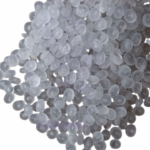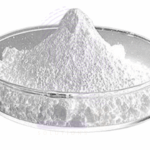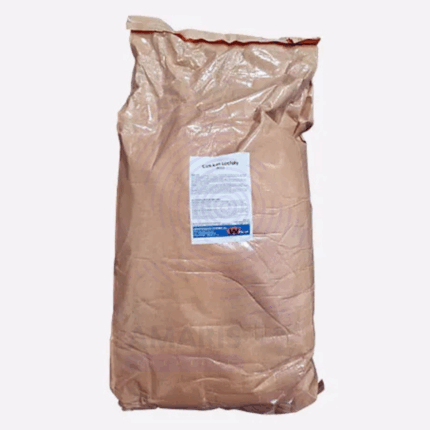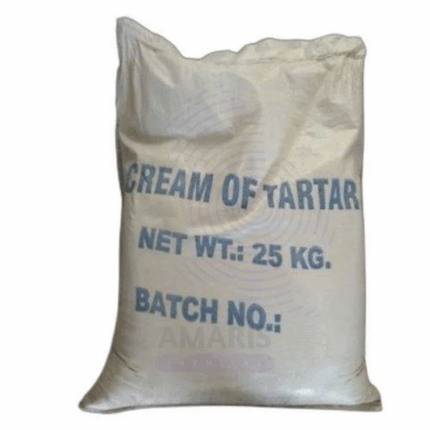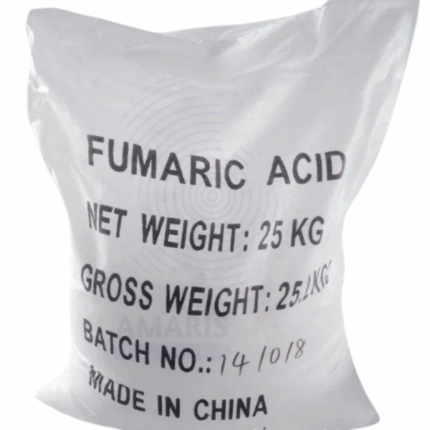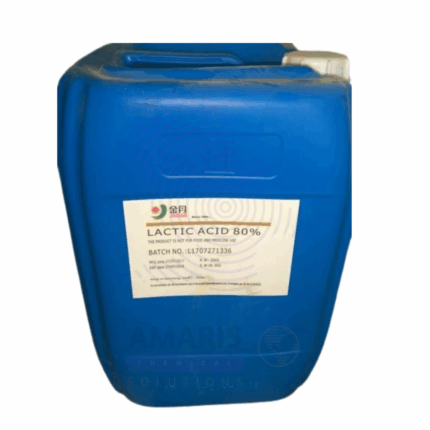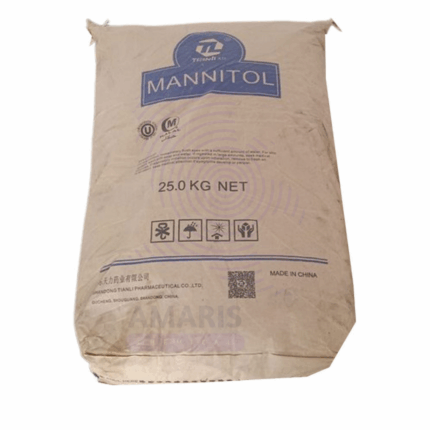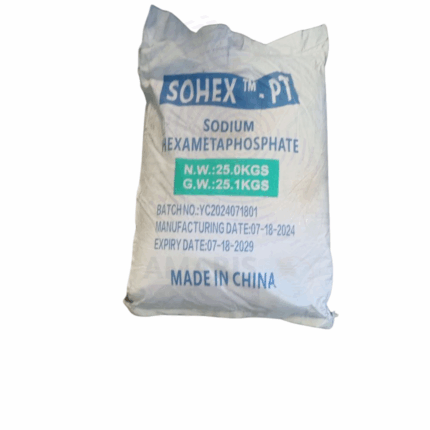Malic Acid
$ 7.45 Original price was: $ 7.45.$ 7.34Current price is: $ 7.34.
Whatsapp Order
Malic Acid is a naturally occurring dicarboxylic acid found in many fruits, particularly apples, and is commonly used as a food additive, flavor enhancer, and acidulant. It is available in crystalline or powder form and has a strong, tart taste. Commercially, it is produced synthetically or extracted from natural sources. Malic Acid exists in two isomeric forms: L-malic acid (naturally occurring and biologically active) and DL-malic acid (synthetic racemic mixture). It is highly soluble in water and widely used in food, beverage, cosmetics, and pharmaceutical industries.
Category: Acidulants
Tags: Acidulant, Flavor Enhancer, Food additive, Malic Acid, Organic Acid, Pharmaceutical use
Description
Table of Contents
Toggle
Malic Acid
Primary Uses
- Food & Beverage Industry
- Acidulant: Adds tartness and enhances flavor in beverages, candies, fruit preparations, jams, and jellies.
- Preservative: Lowers pH to inhibit microbial growth and prolong shelf life.
- Flavor Enhancer: Intensifies fruit flavors and balances sweetness in soft drinks and desserts.
- pH Control Agent: Used to adjust acidity in processed foods and beverages.
- Leavening Agent: In baking powders (when combined with bicarbonates), improves leavening efficiency.
- Pharmaceutical Industry
- Excipient: Acts as a flavoring agent in chewable tablets, syrups, and effervescent formulations.
- Buffering Agent: Helps stabilize pH in oral medicines and topical products.
- Chelating Agent: Used to bind metal ions and enhance bioavailability of active ingredients.
- Active Ingredient: Occasionally used in formulations for kidney stone prevention and metabolic support.
- Cosmetic & Personal Care Products
- Exfoliant: Used in skincare products (e.g., peels, cleansers) for gentle exfoliation and skin renewal.
- pH Adjuster: Helps balance acidity in creams, lotions, and shampoos.
- Humectant: Attracts moisture to the skin, improving hydration in lotions and serums.
- Chemical & Industrial Applications
- Metal Cleaning & Surface Treatment: Functions as a chelating and descaling agent in industrial cleaners.
- Electroplating: Used in some metal plating processes for complexing metal ions.
- Polymer Additive: Occasionally used in biodegradable polymers and resins to improve flexibility or processing.
Secondary Uses
- Animal Nutrition
- Used as a feed additive to improve palatability and digestion in livestock and poultry.
- Agriculture & Horticulture
- Used in foliar sprays and nutrient solutions to enhance nutrient uptake through chelation.
- Sometimes added to crop treatments as a pH buffer and stabilizer.
- Dental Applications
- Incorporated in tooth whiteners and mouth rinses for pH control and flavor enhancement.
- Occasionally used in plaque-removing formulations.
- Laboratory & Research
- Used in biochemical research as a buffering or pH-adjusting agent in enzyme assays and fermentation processes.
- Beverage Mixes & Nutraceuticals
- Included in sports drinks, dietary supplements, and rehydration salts for tartness and mineral absorption.
KEY PRODUCT FEATURES
1. Basic Identification Attributes
- Chemical Name (IUPAC): 2-Hydroxy-1,2,3-propane-tricarboxylic acid
- Common/Trade Name: Malic Acid
- CAS Number: 6915-15-7 (DL-malic acid); 97-67-6 (L-malic acid)
- HS Code: 2918.19.00
- Synonyms: Hydroxybutanedioic acid; Apple acid; DL-malic acid; L-malic acid
2. Physical & Chemical Properties
- Physical State: Crystalline solid or fine powder
- Color & Odor: White; odorless
- Solubility: Soluble in water and alcohol
- Melting Point: 100–130 °C (varies by isomer)
- Boiling Point: Decomposes before boiling
- Molecular Formula: C₄H₆O₅
- Molecular Weight: 134.09 g/mol
- pH (1% solution): 2.0–3.0
- Taste: Strongly acidic, sour
- Stability: Stable under dry, cool conditions
3. Safety & Hazard Attributes
- GHS Classification:
- Eye Irritant – Category 2
- Skin Irritant – Category 2 (in concentrated forms)
- Toxicity: Generally recognized as safe (GRAS) when used appropriately
- Exposure Limits: No established occupational exposure limits
- Carcinogenicity: Not classified as carcinogenic
4. Storage & Handling Attributes
- Storage Conditions: Store in a cool, dry place in a tightly sealed container
- Container Type: Food-grade plastic or fiber drums with inner liners
- Shelf Life: Typically 2 years under optimal storage conditions
- Handling Precautions: Avoid dust formation; wear protective gear when handling large quantities
5. Regulatory & Compliance Attributes
- Approved as food additive (E296) by FDA, EFSA, Codex Alimentarius
- Conforms to USP, FCC, and food-grade standards
- REACH registered and compliant with global chemical safety regulations
- Labeling must include purity grade and additive code when used in food
6. Environmental & Health Impact
- Biodegradability: Readily biodegradable
- Ecotoxicity: Low; minimal environmental risk under typical usage
- Bioaccumulation: Not expected to bioaccumulate
- Carcinogenicity/Mutagenicity: Not classified; safe for intended applications
SAFETY HANDLING PRECAUTIONS
Safety Handling Precautions
- PPE Required: Safety goggles, gloves, dust mask (for powder handling)
- Handling Guidelines: Use in well-ventilated area; avoid eye or prolonged skin contact
- Storage Measures: Keep tightly sealed to prevent moisture absorption; store away from strong oxidizers
First Aid Measures
- Inhalation: Move to fresh air if inhaled; seek medical attention if symptoms persist
- Skin Contact: Wash with soap and water; apply moisturizer if dryness occurs
- Eye Contact: Rinse thoroughly with water for 15 minutes; seek medical advice if irritation continues
- Ingestion: Rinse mouth; non-toxic in small amounts, but seek advice if large quantity is consumed
Firefighting Measures
- Fire Hazards: Not flammable, but may decompose at high temperatures
- Extinguishing Media: Use water spray, foam, dry chemical, or CO₂
- Special Precautions: Wear appropriate protective equipment and breathing apparatus
- Hazardous Combustion Products: May produce carbon oxides (CO, CO₂)
Related products
Calcium Lactate Pentahydrate
Calcium Lactate Pentahydrate is a white, crystalline, odorless powder that is the calcium salt of lactic acid with five molecules of water of crystallization. It is moderately soluble in water and has a slightly alkaline pH in solution. Widely used as a calcium supplement in the pharmaceutical and food industries, it is known for its good bioavailability and safety profile. Calcium Lactate Pentahydrate is utilized to prevent and treat calcium deficiencies and plays a role in bone health, muscle function, and enzyme activity. It also finds applications as a food additive and firming agent.
Cream of Tartar
Cream of Tartar, chemically known as Potassium Hydrogen Tartrate (KC4H5O6), is a fine, white, acidic powder that is a byproduct of winemaking. It is a natural crystalline acid salt obtained from tartaric acid during the fermentation of grapes. This odorless and tasteless powder is widely used in culinary, pharmaceutical, and industrial applications due to its stabilizing, acidifying, and leavening properties. Cream of Tartar is valued for its ability to stabilize egg whites, prevent sugar crystallization, and act as an acidulant in various formulations.
Ferric Ammonium Citrate
Ferric Ammonium Citrate is a dark green to black crystalline or granular inorganic compound composed of iron, ammonium ions, and citrate ions. It is a complex salt of citric acid with ferric iron (Fe³⁺) and ammonium. This compound is highly soluble in water, forming a greenish solution, and is widely utilized as a source of iron in various chemical, pharmaceutical, photographic, and food applications. It acts as a mild oxidizing agent and an iron supplement, valued for its bioavailability and ease of incorporation into formulations. Ferric Ammonium Citrate is typically available in different formulations distinguished by their water and ammonium content, such as green and brown types.
Fumaric Acid
Fumaric Acid is a naturally occurring dicarboxylic acid characterized by its white crystalline powder form and a slightly acidic taste. It is an unsaturated organic acid with the chemical formula C4H4O4 and is an intermediate in the Krebs cycle in biological systems. Fumaric Acid is commonly found in various plants and fungi and is commercially produced by isomerization of maleic acid or by fermentation. It is widely used in the food, pharmaceutical, chemical, and polymer industries due to its acidulant, antioxidant, and crosslinking properties.
Lactic Acid
Lactic Acid is a colorless to pale yellow, viscous liquid with a mild acidic odor. It is an organic acid naturally produced by fermentation and widely used in industrial, pharmaceutical, cosmetic, and food applications. The 80% concentration provides a balance of potency and ease of handling, making it suitable for pH adjustment, preservation, and chemical synthesis. Lactic acid is biodegradable, non-toxic, and valued for its multifunctionality including antimicrobial properties and chelation abilities.
Maninitol BP
Maninitol BP is a white, crystalline, sugar alcohol derived from mannose, widely used in pharmaceutical, food, and cosmetic industries. It functions as a sweetener, humectant, and excipient. Mannitol BP is non-hygroscopic and has low sweetness compared to sucrose, making it ideal for sugar-free formulations. It is commonly employed in tablet manufacturing as a filler and binder, and in medical settings as an osmotic diuretic to reduce intracranial pressure. The British Pharmacopoeia (BP) grade ensures compliance with pharmacopeial standards for purity and quality.
Monosodium Glutamate
Monosodium Glutamate is the sodium salt of the naturally occurring amino acid glutamic acid. It appears as a white crystalline powder with a clean, savory taste known as "umami." MSG is widely used as a flavor enhancer in the food industry to intensify and balance flavors. The FCC (Food Chemicals Codex) grade indicates it meets purity and safety standards for food use.
Sodium Hexametaphosphate Food Grade
Sodium Hexametaphosphate Food Grade is a white, granular or powdery inorganic compound composed of sodium and metaphosphoric acid polymers. It is highly soluble in water and acts as an effective sequestrant, dispersing agent, and water softener. SHMP is widely used across various industries including food processing, water treatment, detergents, ceramics, and metallurgy. It helps control hardness, prevent scale formation, and stabilize formulations, making it valuable in both industrial and consumer applications.


 Preservatives(food)
Preservatives(food) Flavor Enhancers
Flavor Enhancers Acidulants
Acidulants Sweeteners
Sweeteners Antioxidants
Antioxidants Colorants(food)
Colorants(food) Nutraceutical Ingredients (food)
Nutraceutical Ingredients (food) Nutrient Supplements
Nutrient Supplements Emulsifiers
Emulsifiers
 Collectors
Collectors Dust Suppressants
Dust Suppressants Explosives and Blasting Agents
Explosives and Blasting Agents Flocculants and Coagulants
Flocculants and Coagulants Frothers
Frothers Leaching Agents
Leaching Agents pH Modifiers
pH Modifiers Precious Metal Extraction Agents
Precious Metal Extraction Agents
 Antioxidants(plastic)
Antioxidants(plastic) Colorants (Pigments, Dyes)
Colorants (Pigments, Dyes) Fillers and Reinforcements
Fillers and Reinforcements Flame Retardants
Flame Retardants Monomers
Monomers Plasticizers
Plasticizers Polymerization Initiators
Polymerization Initiators Stabilizers (UV, Heat)
Stabilizers (UV, Heat)
 Antifoaming Agents
Antifoaming Agents Chelating Agents
Chelating Agents Coagulants and Flocculants
Coagulants and Flocculants Corrosion Inhibitors
Corrosion Inhibitors Disinfectants and Biocides
Disinfectants and Biocides Oxidizing Agents
Oxidizing Agents pH Adjusters
pH Adjusters Scale Inhibitors( water)
Scale Inhibitors( water)
 Antioxidants(cosmetic)
Antioxidants(cosmetic) Emollients
Emollients Fragrances and Essential Oils
Fragrances and Essential Oils Humectants
Humectants Preservatives
Preservatives Surfactants(cosmetic)
Surfactants(cosmetic) Thickeners
Thickeners UV Filters
UV Filters
 Fertilizers
Fertilizers Soil Conditioners
Soil Conditioners Plant Growth Regulators
Plant Growth Regulators Animal Feed Additives
Animal Feed Additives Biostimulants
Biostimulants Pesticides (Herbicides, Insecticides, Fungicides)
Pesticides (Herbicides, Insecticides, Fungicides)
 Active Pharmaceutical Ingredients (APIs)
Active Pharmaceutical Ingredients (APIs) Excipients
Excipients Solvents(pharmaceutical)
Solvents(pharmaceutical) Antibiotics
Antibiotics Antiseptics and Disinfectants
Antiseptics and Disinfectants Vaccine Adjuvants
Vaccine Adjuvants Nutraceutical Ingredients (pharmaceutical)
Nutraceutical Ingredients (pharmaceutical) Analgesics & Antipyretics
Analgesics & Antipyretics
 Analytical Reagents
Analytical Reagents Solvents(lab)
Solvents(lab) Chromatography Chemicals
Chromatography Chemicals Spectroscopy Reagents
Spectroscopy Reagents microbiology-and-cell-culture-reagents
microbiology-and-cell-culture-reagents Molecular Biology Reagents
Molecular Biology Reagents Biochemical Reagents
Biochemical Reagents Inorganic and Organic Standards
Inorganic and Organic Standards Laboratory Safety Chemicals
Laboratory Safety Chemicals Specialty Laboratory Chemicals(Special Laboratory Equipment)
Specialty Laboratory Chemicals(Special Laboratory Equipment)
 Demulsifiers
Demulsifiers Hydraulic Fracturing Fluids
Hydraulic Fracturing Fluids Scale Inhibitors(oil)
Scale Inhibitors(oil) Surfactants(oil)
Surfactants(oil) Drilling Fluids
Drilling Fluids
 Dyes and Pigments
Dyes and Pigments Bleaching Agents
Bleaching Agents Softening Agents
Softening Agents Finishing Agents
Finishing Agents Antistatic Agents
Antistatic Agents
 Admixtures
Admixtures Waterproofing Agents
Waterproofing Agents Sealants and Adhesives
Sealants and Adhesives Curing Compounds
Curing Compounds Concrete Repair Chemicals
Concrete Repair Chemicals Anti-Corrosion Coatings
Anti-Corrosion Coatings
 Surfactants(cleaning)
Surfactants(cleaning) Builders
Builders Enzymes
Enzymes Solvents (Cleaning)
Solvents (Cleaning) Fragrances
Fragrances
 Electronic Chemicals
Electronic Chemicals Catalysts
Catalysts Lubricants
Lubricants Photographic Chemicals
Photographic Chemicals Refrigerants
Refrigerants Automotive chemicals
Automotive chemicals Pyrotechnic Chemicals
Pyrotechnic Chemicals
 Biodegradable Surfactants
Biodegradable Surfactants Bio-based Solvents
Bio-based Solvents Renewable Polymers
Renewable Polymers Carbon Capture Chemicals
Carbon Capture Chemicals Wastewater Treatment Chemicals
Wastewater Treatment Chemicals
 Pigments
Pigments Solvents(paint)
Solvents(paint) Specialty Coatings
Specialty Coatings Binders/Resins
Binders/Resins Additives
Additives Driers
Driers Anti-Corrosion Agents
Anti-Corrosion Agents Functional Coatings
Functional Coatings Application-Specific Coatings
Application-Specific Coatings
 Fresh Herbs
Fresh Herbs Ground Spices
Ground Spices Whole Spices
Whole Spices Spice Blends
Spice Blends Dried Herbs
Dried Herbs
 Leavening Agents
Leavening Agents Dough Conditioners
Dough Conditioners Flour Treatments
Flour Treatments Fat Replacers
Fat Replacers Decoratives
Decoratives Preservatives(baking)
Preservatives(baking)
 Plasticizers & Softeners
Plasticizers & Softeners Reinforcing Agents
Reinforcing Agents Adhesion Promoters
Adhesion Promoters Vulcanizing Agents
Vulcanizing Agents Antidegradants
Antidegradants Blowing Agents
Blowing Agents Fillers & Extenders
Fillers & Extenders Accelerators & Retarders
Accelerators & Retarders
